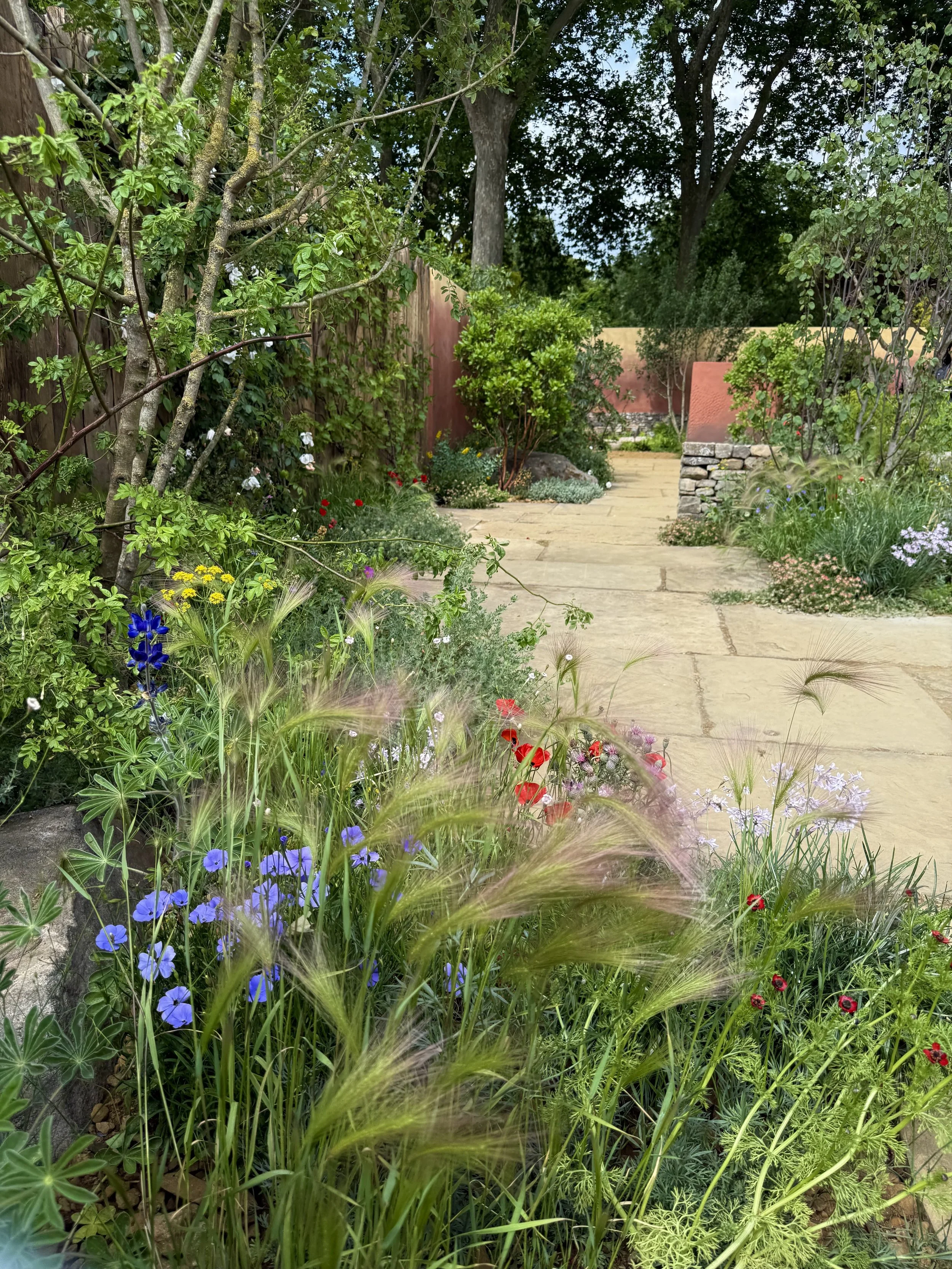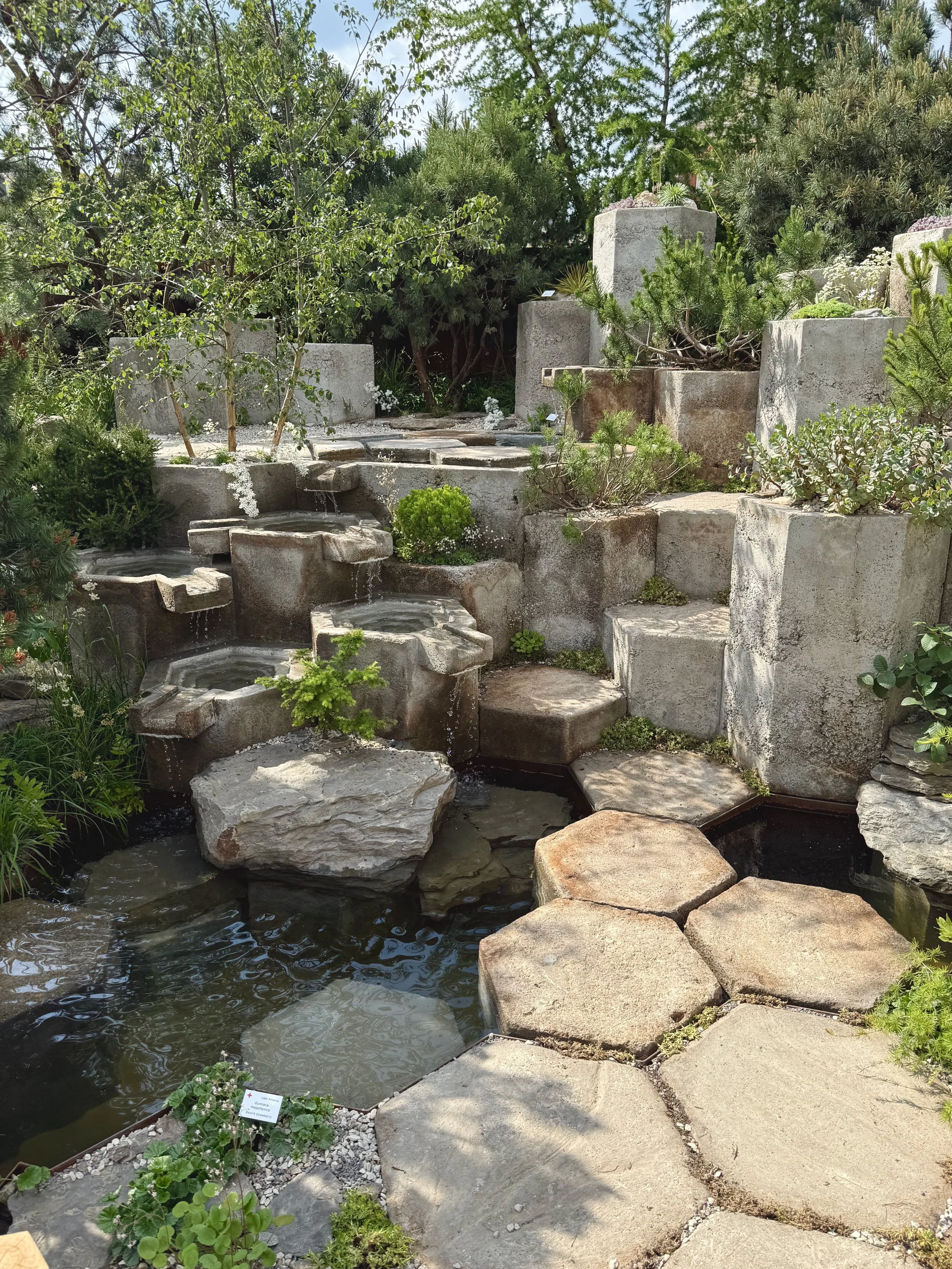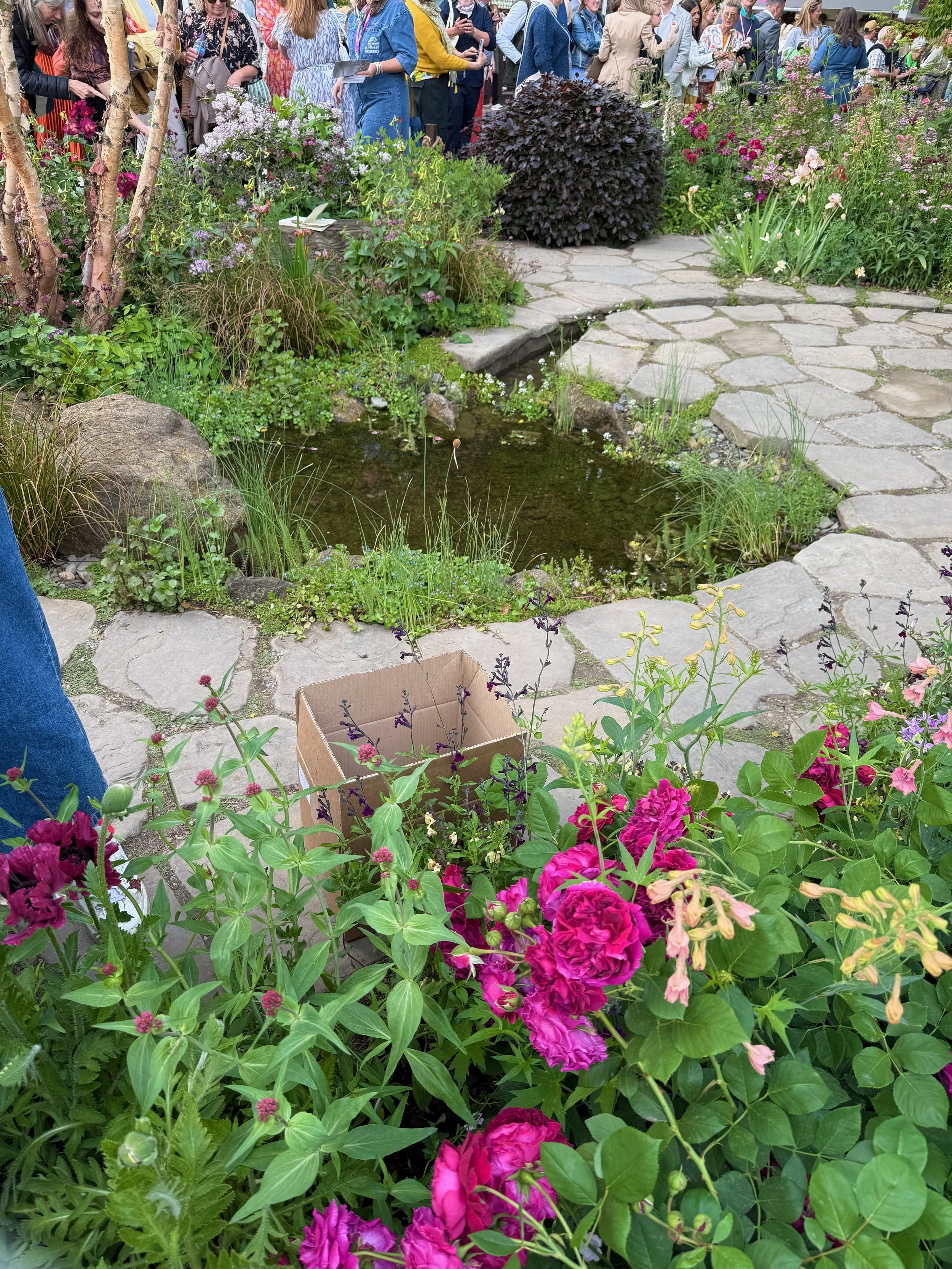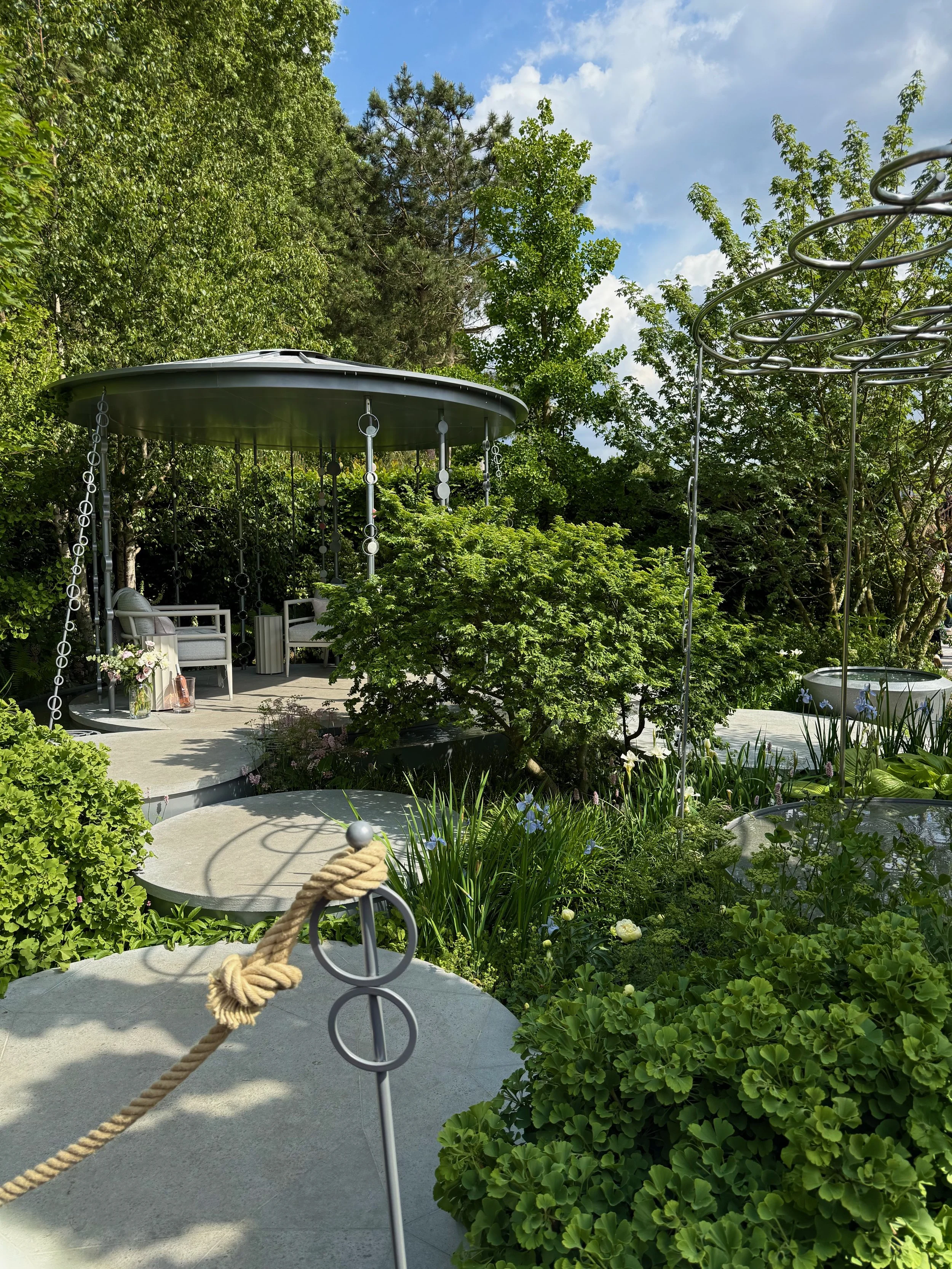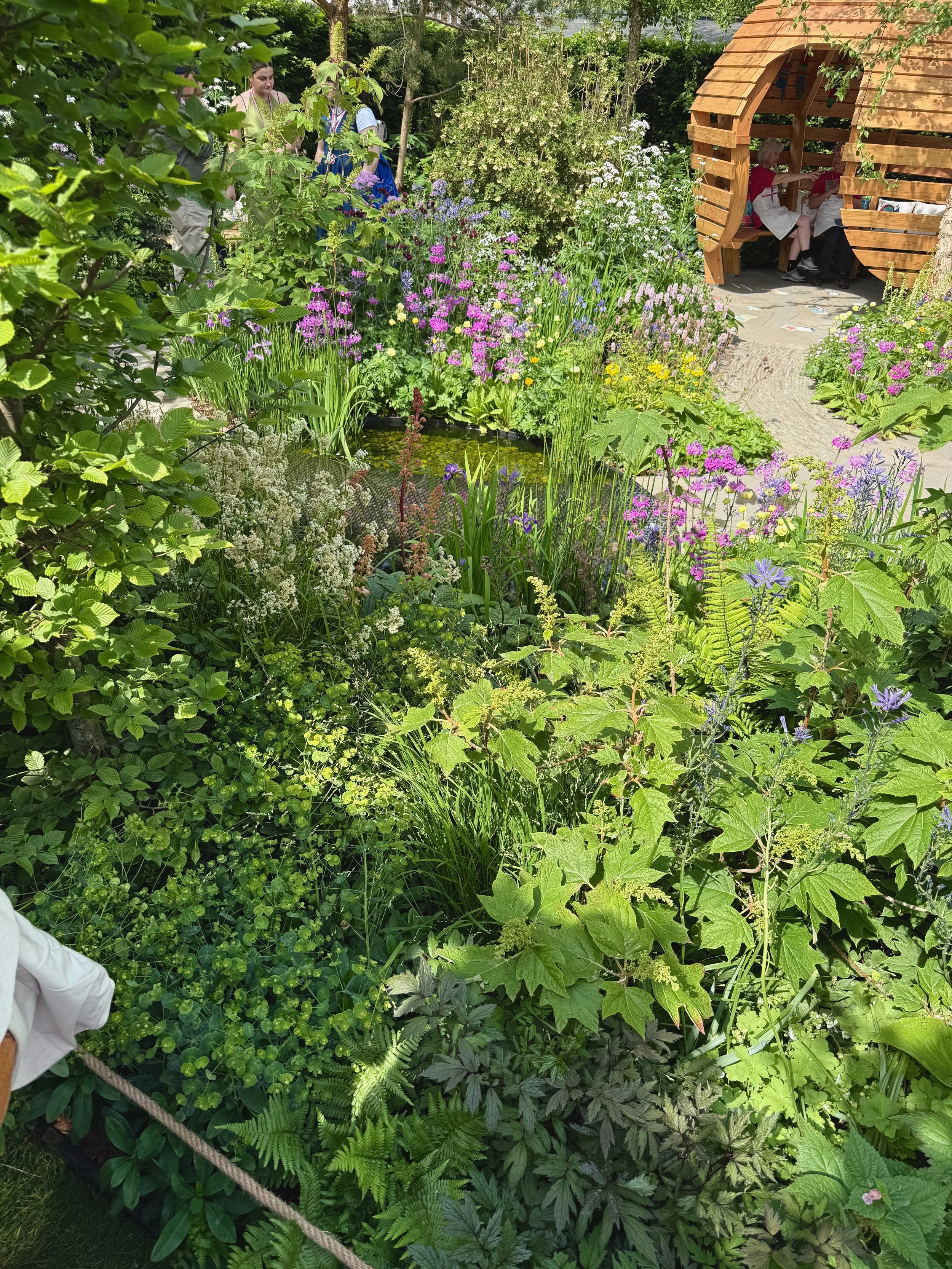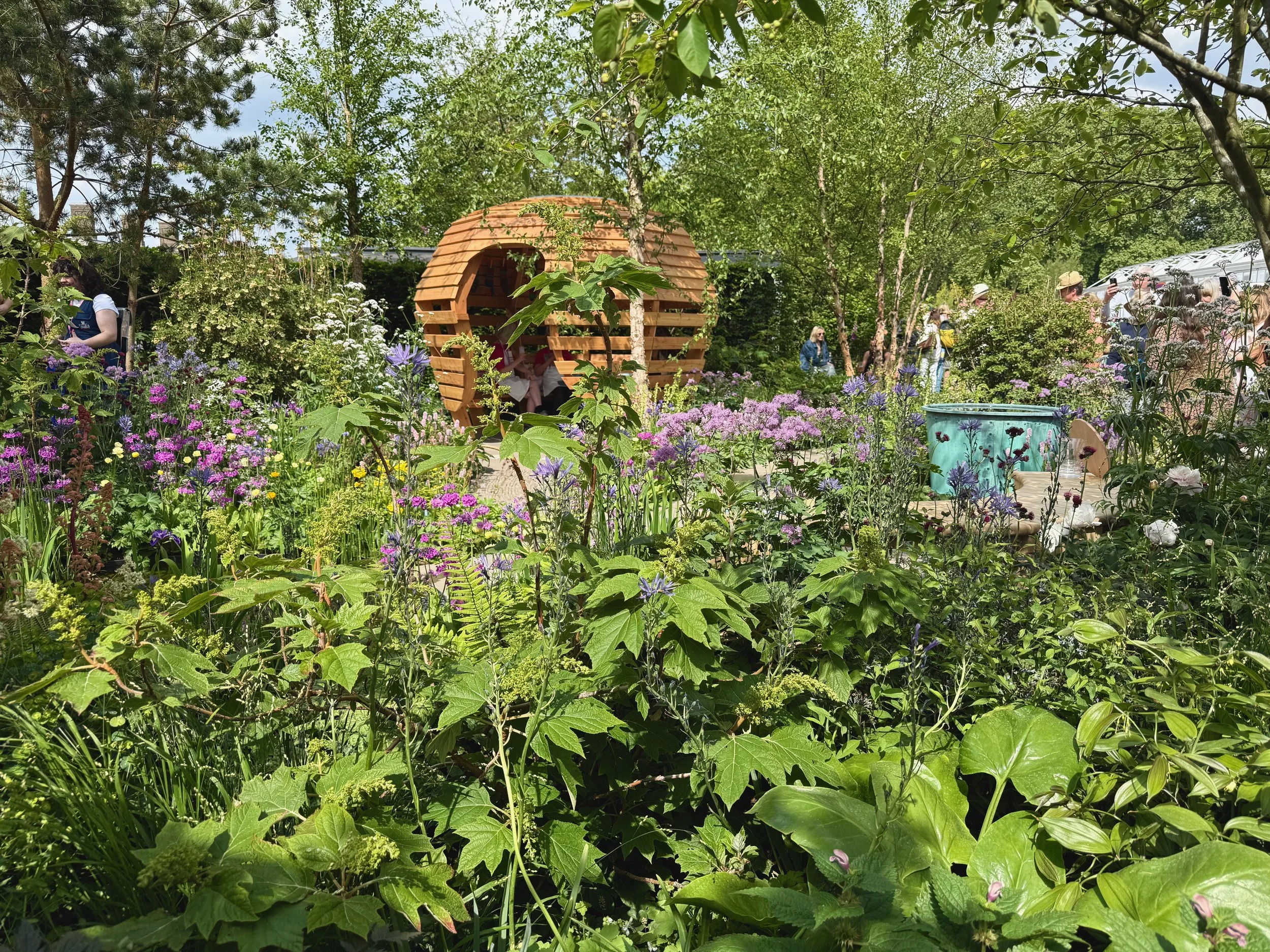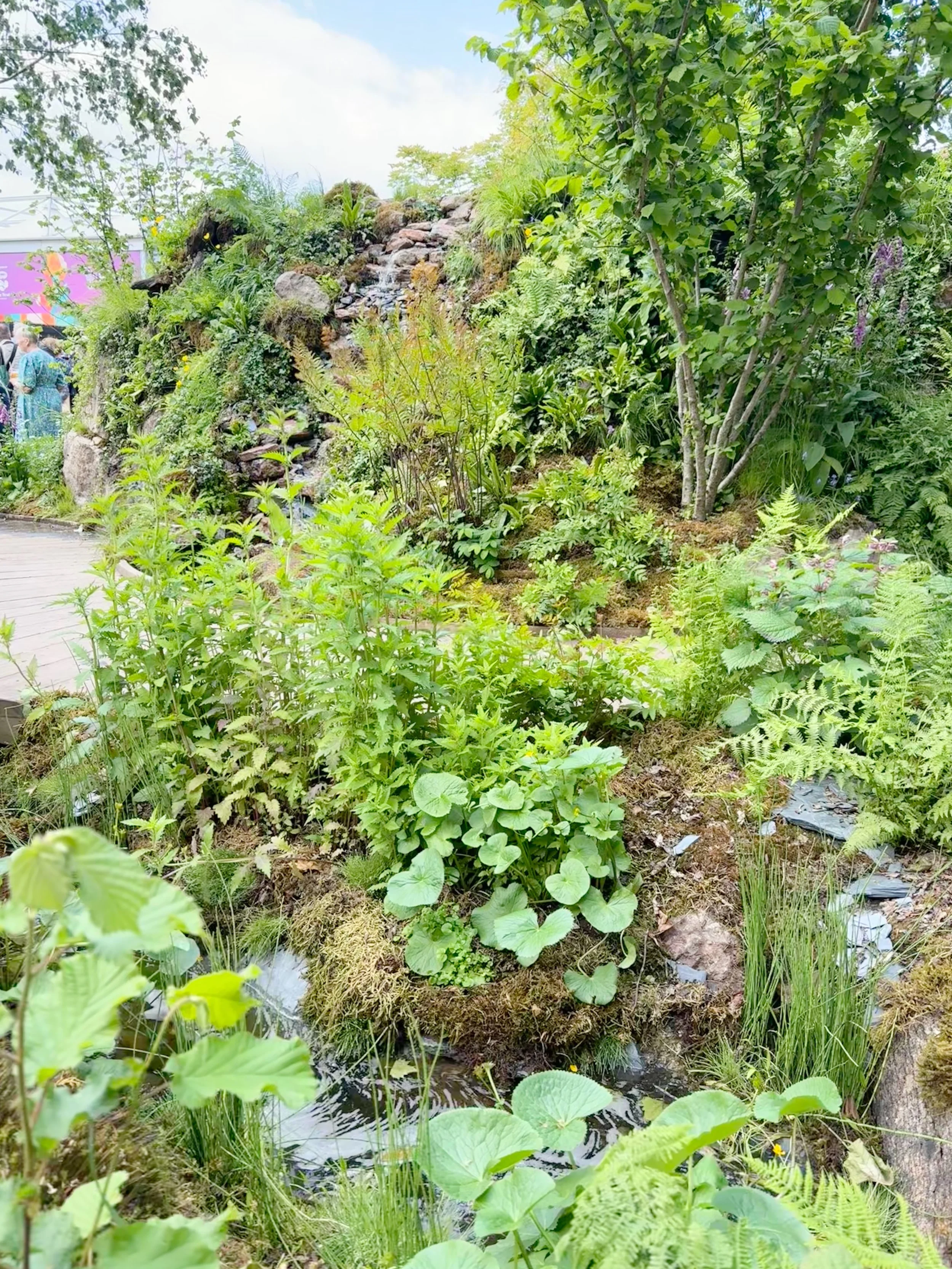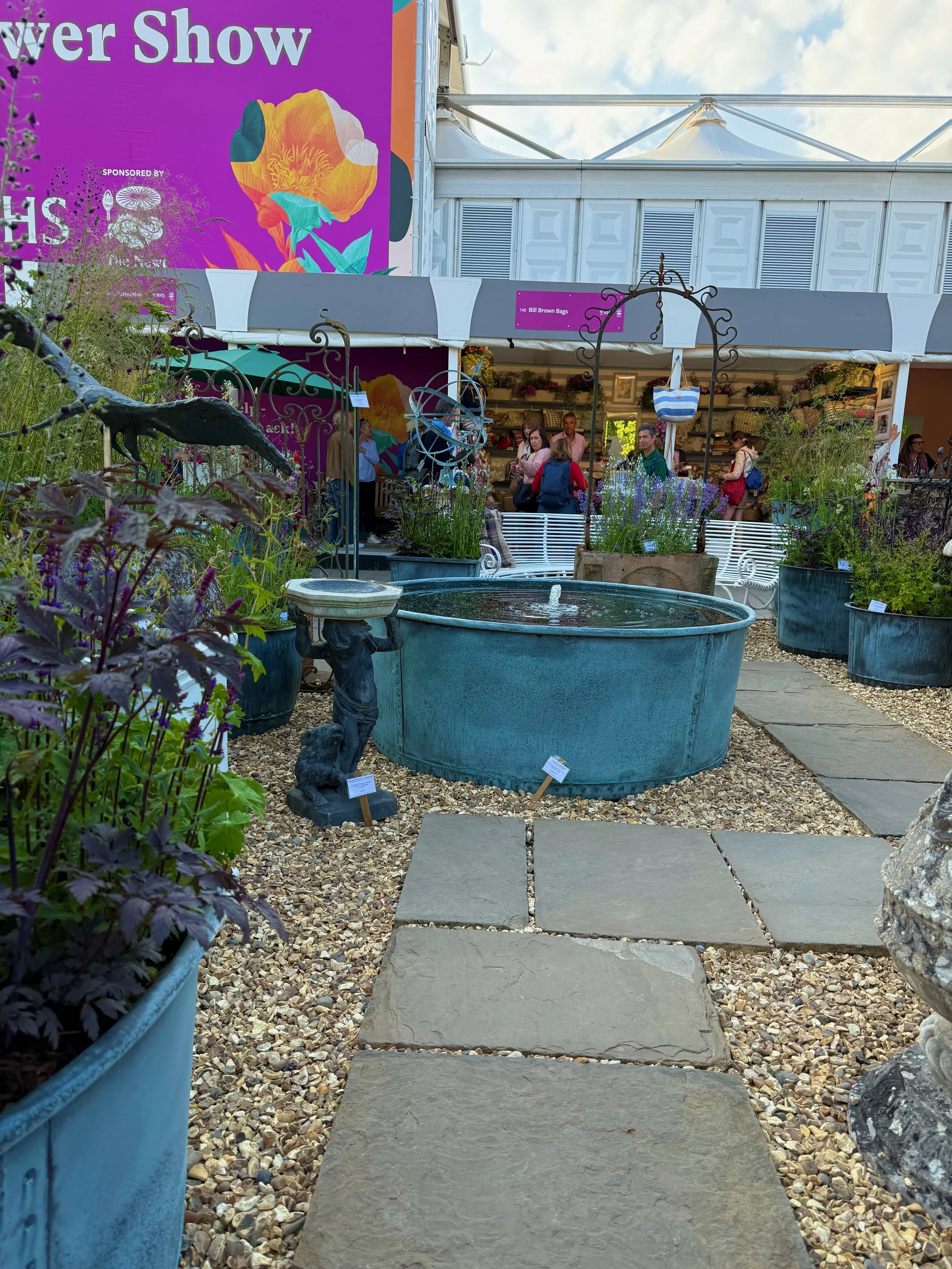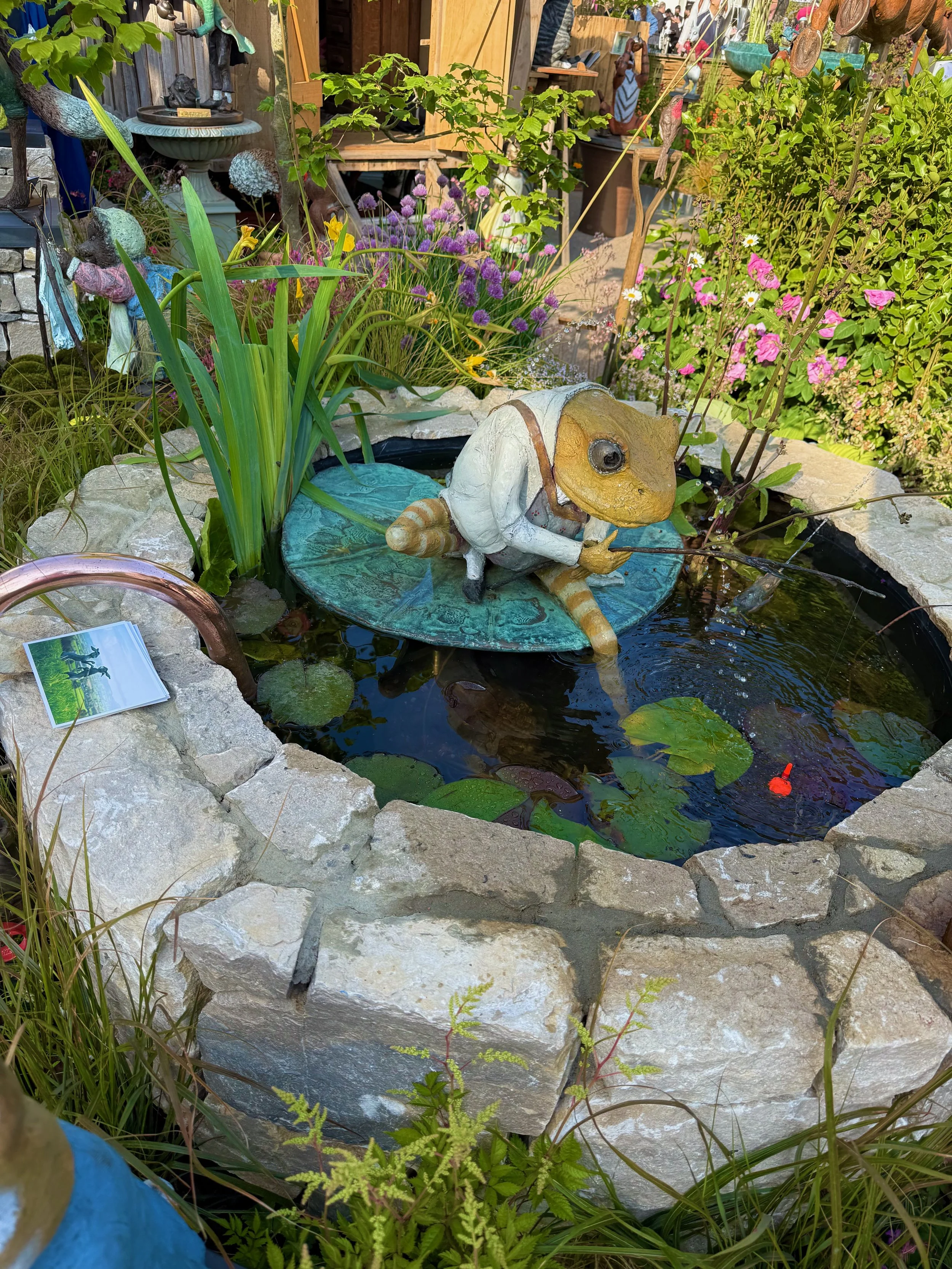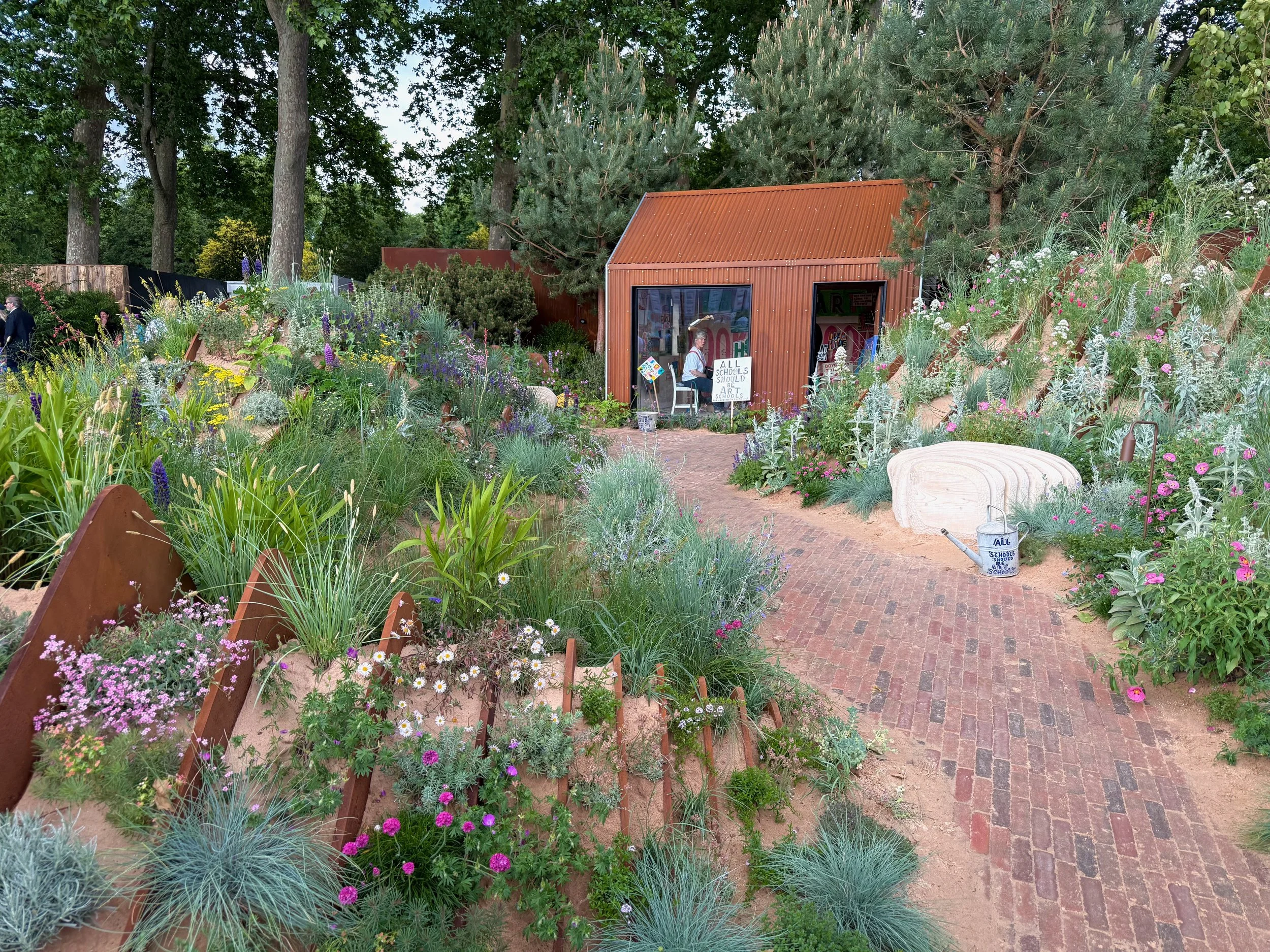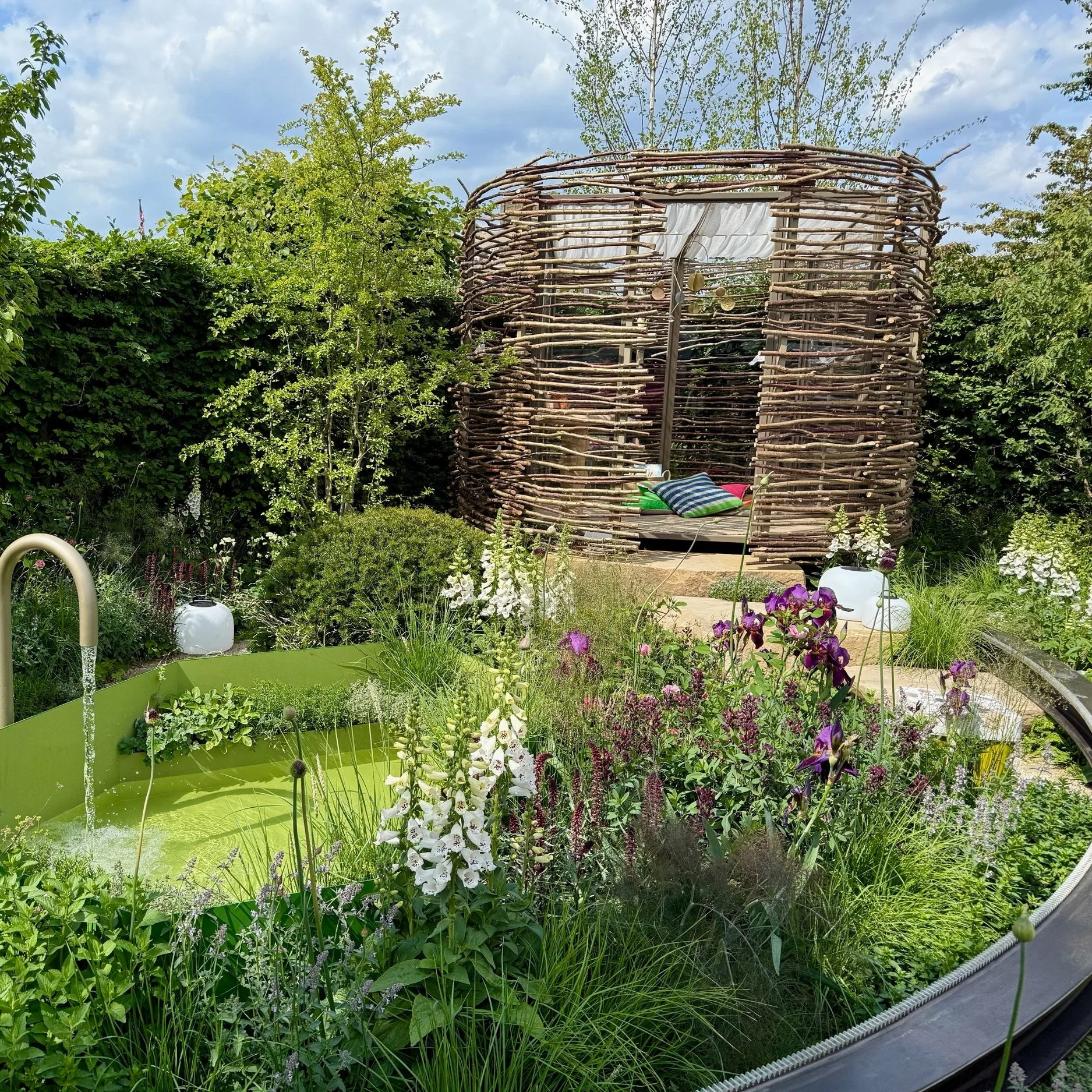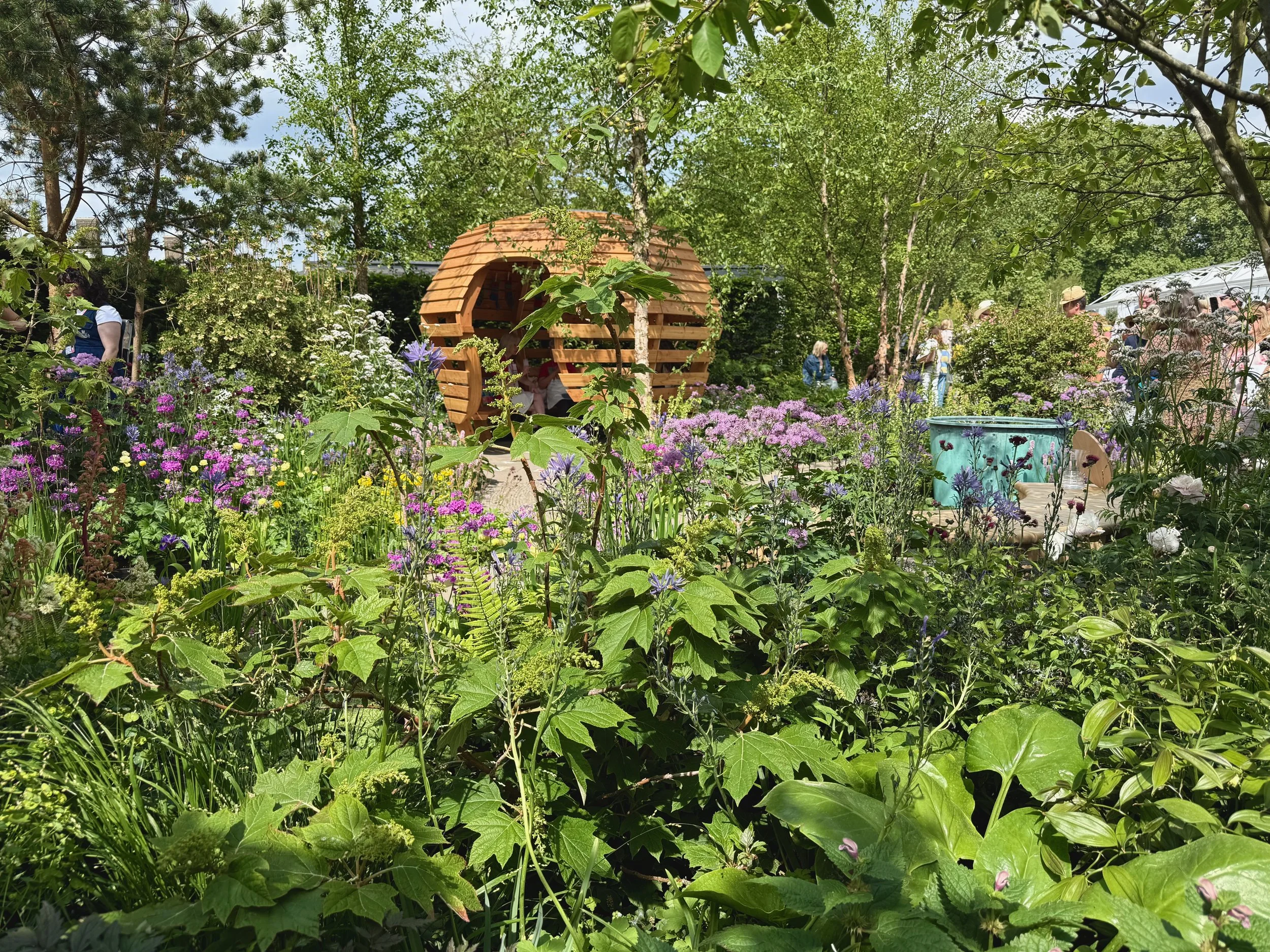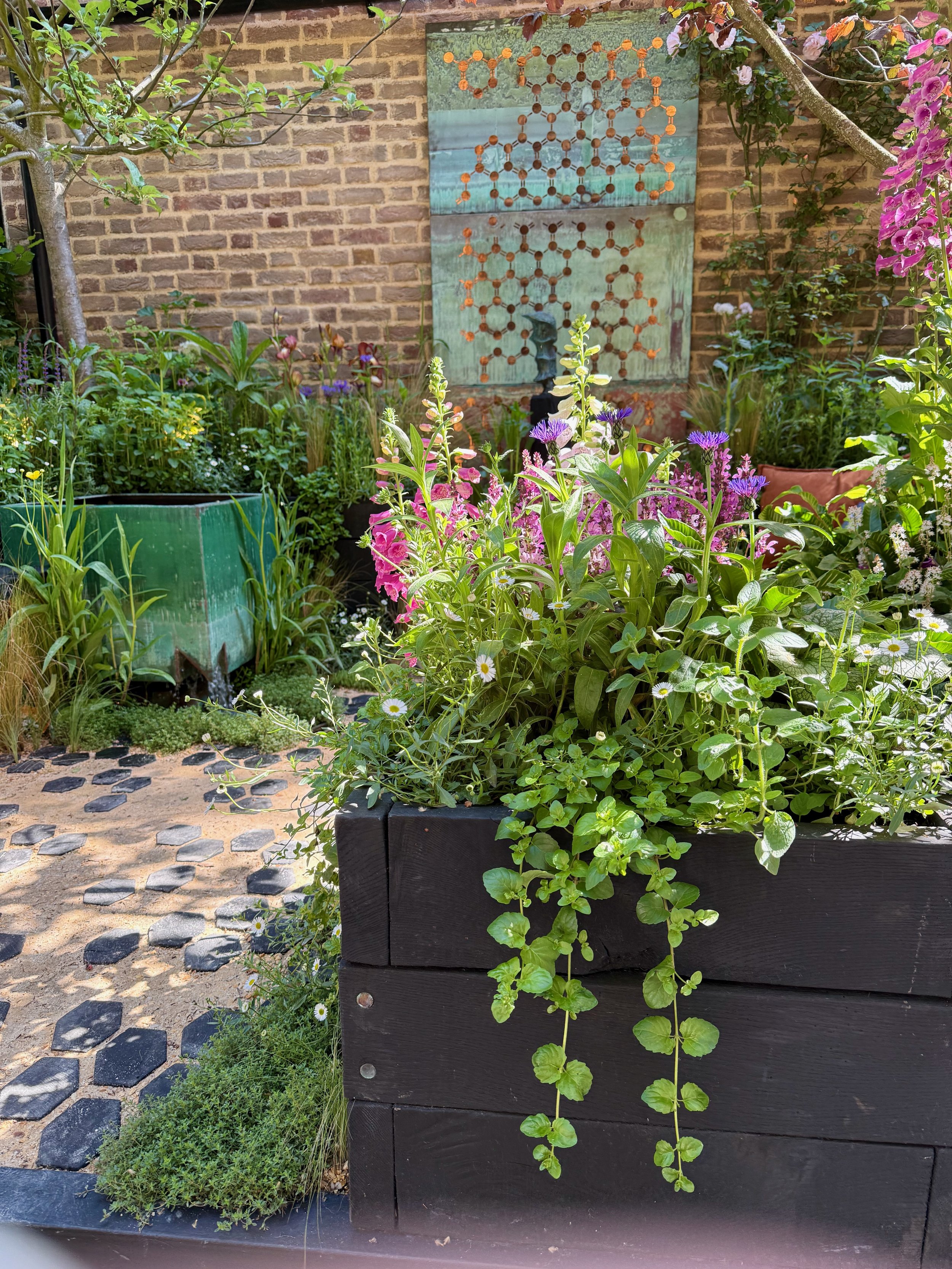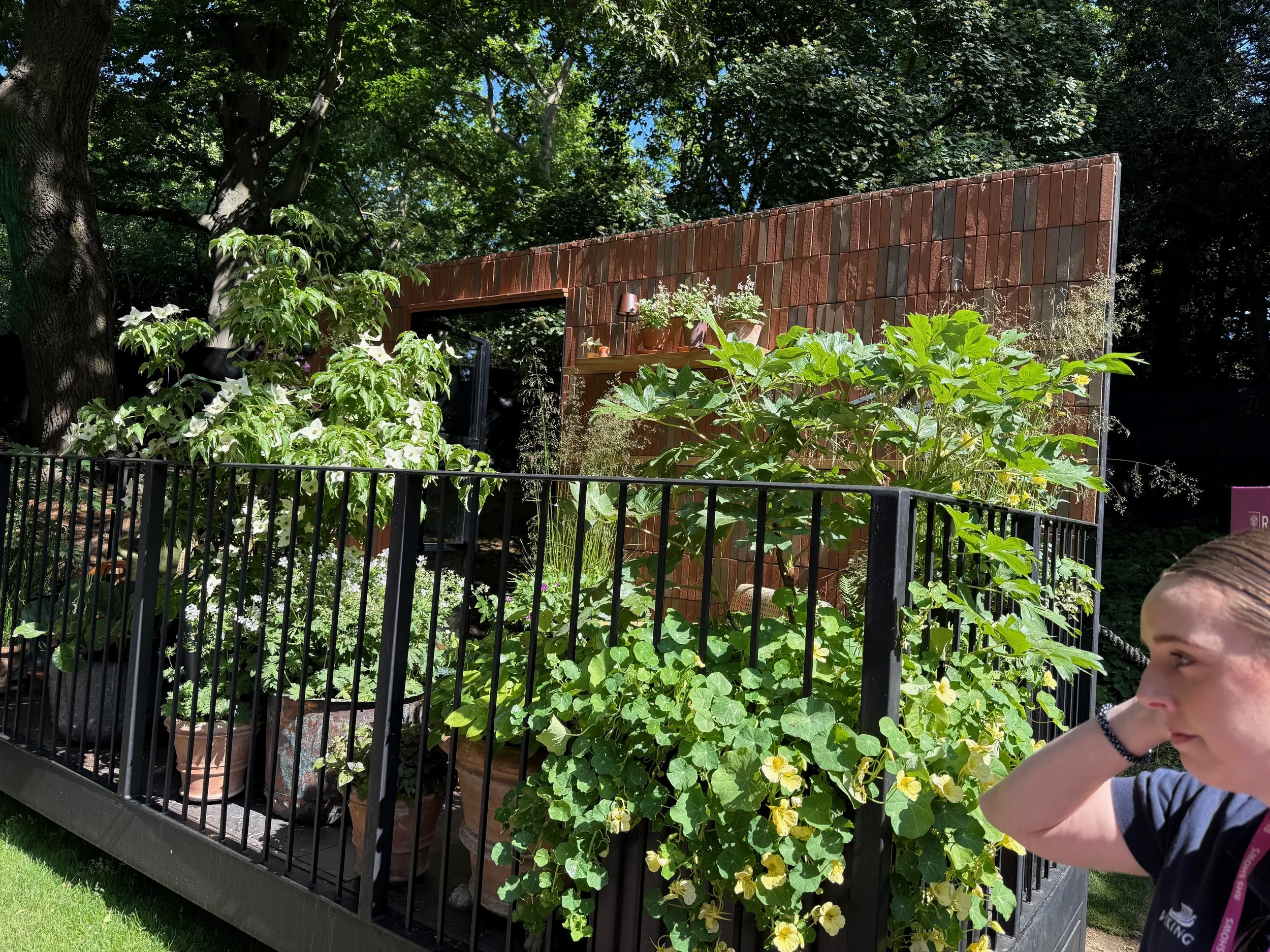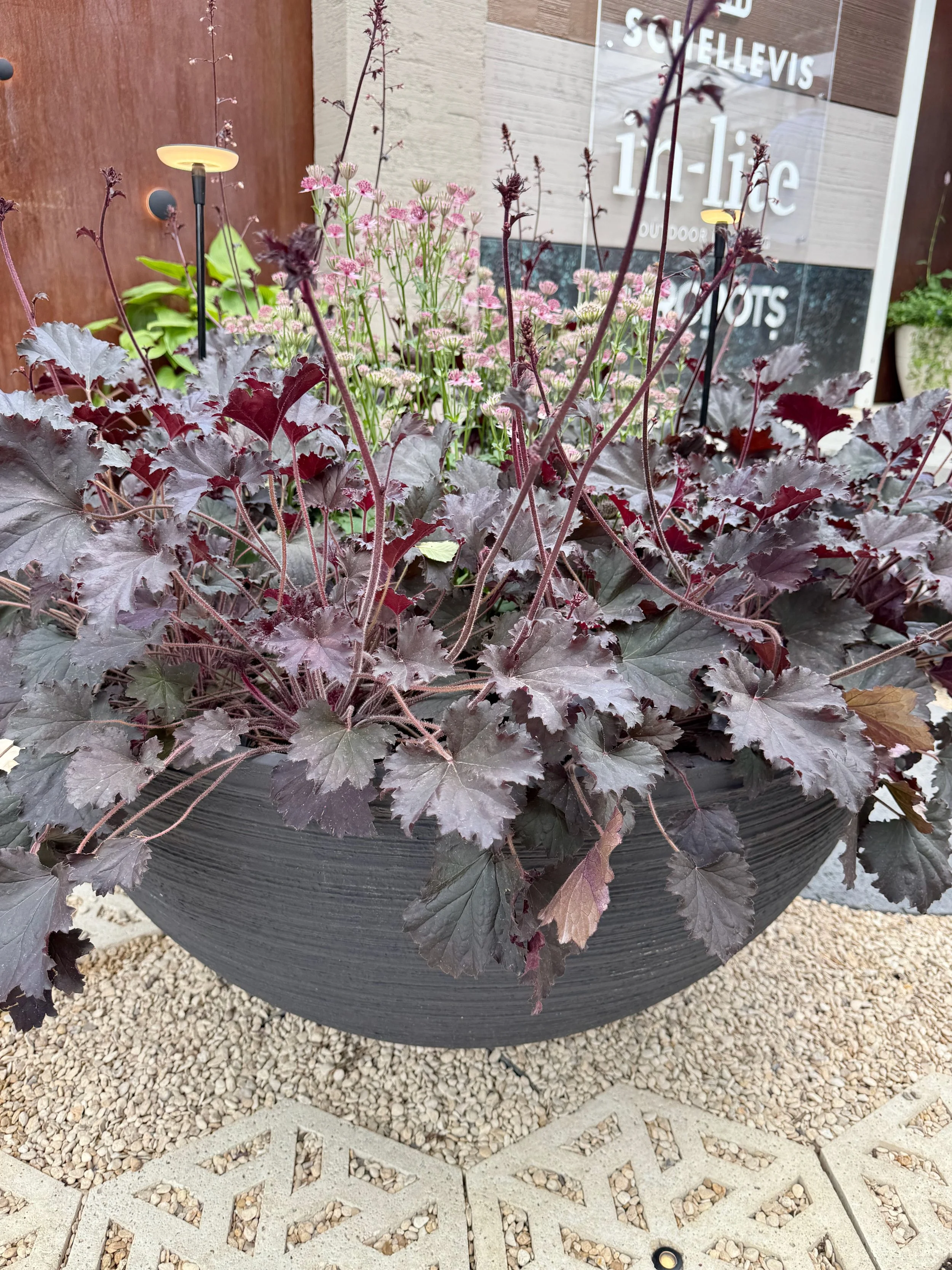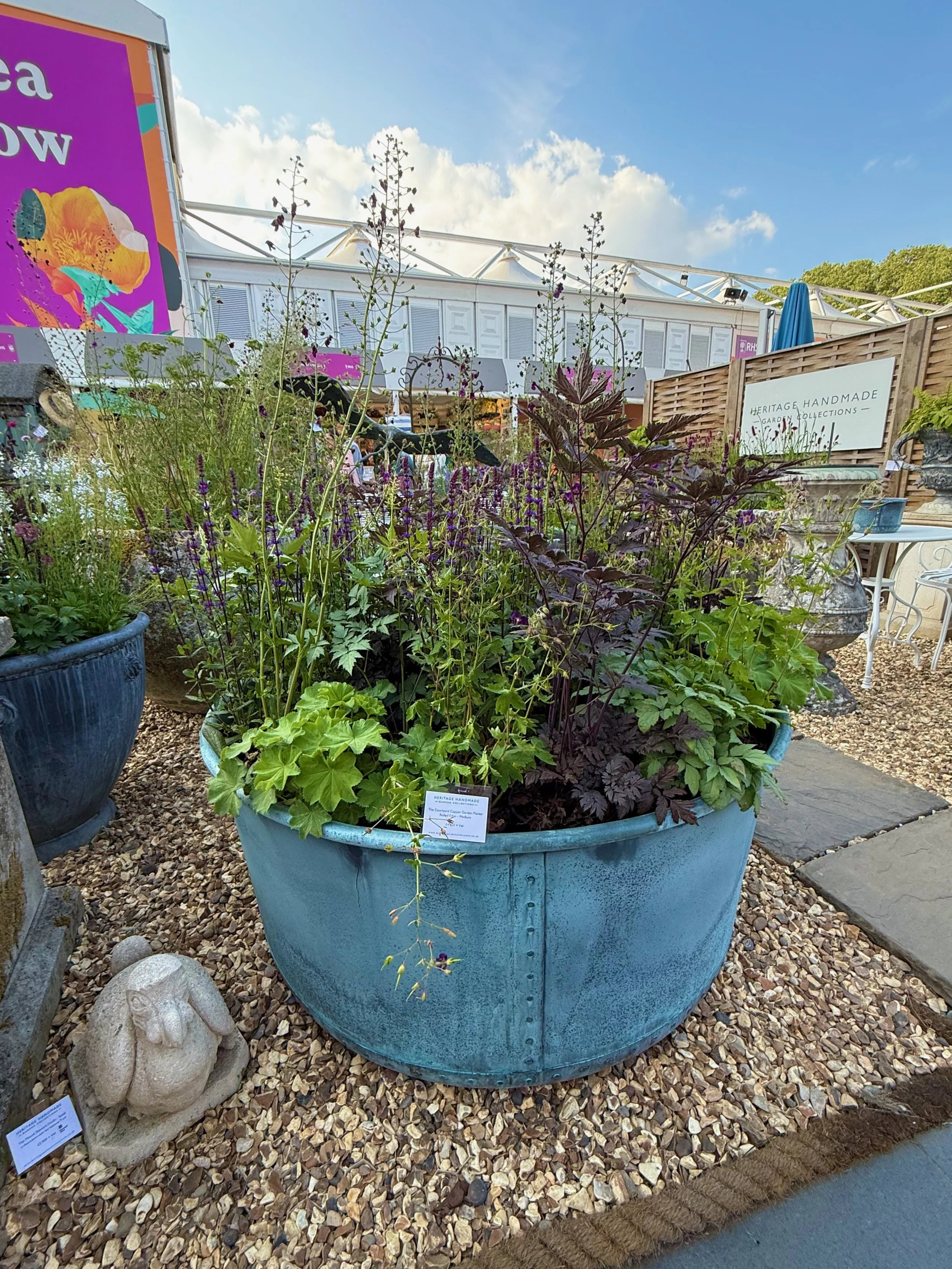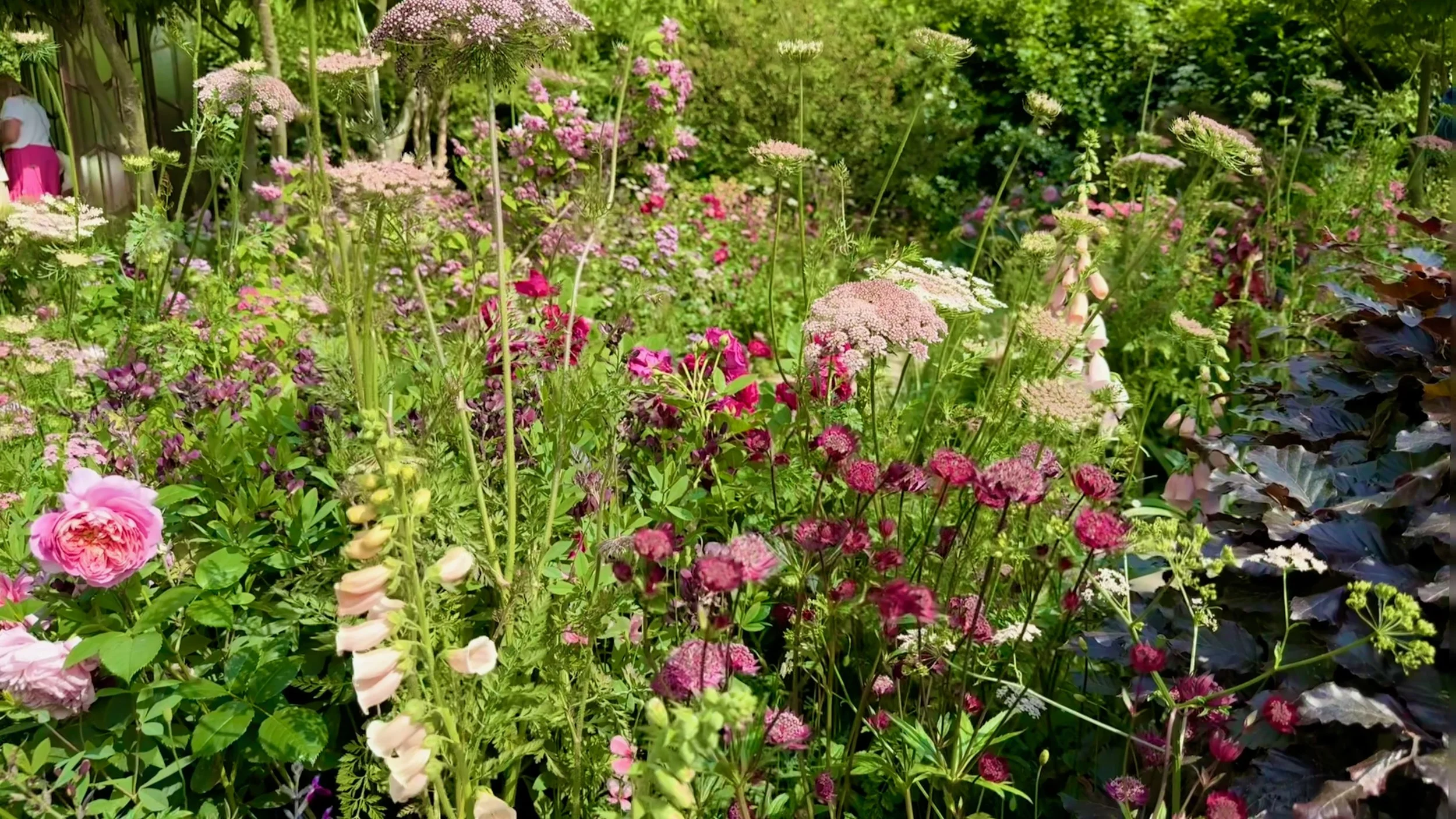Garden Design Inspiration
Design Ideas for your Yard or Garden
from the 2025 Chelsea Flower Show
This is part of a series about design ideas from the 2025 Chelsea Flower Show.
You’ll find all of my posts here.
Design Inspiration: Hardscaping & Structure
A few weeks ago I was lucky enough to attend the Chelsea Flower Show in London, an event dedicated to gardening and garden design over a full week of show gardens, displays, and shopping. It was an extravaganza of garden nerding, and I loved every moment. The whole experience could have been so overwhelming — scents and sights and experiences plus thousands of people.
But I wasn’t there to review the show gardens — that’s been done. Nor to encourage others to attend. I was there to find ideas that can help us, the home gardeners, to garden better no matter where we live. And as I walked the grounds, I was thinking particularly about those of us in North America – many in very different climates and extremes from the relatively temperate UK.
Was there anything to bring home from Chelsea to my own Colorado garden? Or for us all in North America?
Yes! Absolutely! None of these ideas are new or ground-breaking. Yet, in some ways they are.
For North American gardeners, our culture of gardening is so different from that in the UK. We tend to think of our yards as something out there — and we seek out landscaping by others, preferring “low maintenance” plantings. Partly this is a product of our pace of life. Partly it is a product of the extremes of climate in which many of us live. Partly it is an absence of a national gardening culture.
Afterall, gardening has been a British obsession for more than 200 years and is deeply ingrained in the British lifestyle and psyche. But North American gardeners are increasingly staking a claim thanks in part to social media. Gardening isn’t just about growing vegetables. Gardening isn’t just for the wealthy. And gardening isn’t the purview of the trad wife. Gardening is for everyone — and everyone deserves to have a beautiful outdoor space.
David Pogue and CBS Mornings recently did a piece about the rise of outdoor spaces as design priorities, but they missed an enormous opportunity. They focused on a $700,000 makeover with a pool and a movie theater and some landscaping. It was, frankly, a disgusting 4 minutes of excess. Very few people can afford such an extravagance, and none of that lavishness does anything to support wildlife or pollinators or community. It was nothing but a vanity puff piece.
But there are growing numbers of people who are investing in their outdoor spaces in realistic ways, and here are some of my favorite take home ideas from the Chelsea Flower Show which can be implemented in your outdoor space at any budget.
Peat-free is Possible
So let’s start with a little controversy. In the weeks leading up to the Chelsea Flower Show, there were a few horticultural professionals who protested the show itself because the RHS relaxed their rules about peat-free growers to allow more European-grown plants to be used and to be sold. The UK is moving toward a peat-free gardening industry, and the RHS has been a powerful voice in that movement.
Political machinations aside, the UK gardening industry is light-years ahead of anything in North America where such regulations aren’t even being discussed, peat-free options at garden centers are rare, and major growers aren’t even entertaining the idea of going peat-free. In fact, in a recent visit to a large commercial greenhouse, I asked the owner if he had considered going peat-free, and he had no idea why anyone would even think peat is an issue.
So seeing so many growers and plant sellers proudly displaying their peat-free placards at their stalls warmed my heart! I hope North America will catch up on this front at some point, but until then we do all we can within our own gardens and yards.
What You Can Do at Home:
Start with my Peat-Free Gardening Guide. It gives you the why – why is peat-harvesting problematic – and the how – recipes for peat-free gardening mixes and other tips. I have been peat-free for years, and I have no complaints.
Ponds & Water Features
Every show garden at Chelsea had a water feature of some kind. They were made from different materials — metal, concrete, stone. Some were large and central to the design. Others were small and tucked away. Some were still. Others flowed. But they all had water.
For decades in North American we have been sworn off ponds and other bodies of water to ward off mosquitos — a legitimate concern in our climate. But, there are ways to have ponds safely. In fact, they can be a tool in reducing mosquito populations if treated with mosquito dunks or populated with small fish.
And here’s the thing about ponds and water features: they don’t have to be expensive or made of plastic. Many of the show garden ponds were simply metal tanks of water. While that can be expensive, there are all kinds of water-tight containers available on FBMP or other trading sites. Consider sinks, troughs, stock tanks, and the like! There is something elegant and simple about water in a garden — still or moving. And ponds big or small support wildlife including dragonflies and birds and amphibians, too.
Of course, there were also vendors ready to help you splurge on a fountain or ready-made water feature solution, too. And there’s nothing wrong with that, if it is in your budget. But my point is: put some water in your garden any way you can. There are cheap ways to do it!
Click on the photos below for a better view
Stunning water feature in the Here for Humanity Garden by John Warland & Tom Bannister
What You Can Do at Home:
Put in a small pond. You can use a bird bath, a planter, a stock tank, an old sink or bathtub – get creative! It can flow or bubble or just be still. I actually have several in my own garden with more coming soon. We have had ducks and other birds, dragonflies, squirrels, and so many other creatures who take advantage of our water features! Not only are they interesting and relaxing, but they are also helpful for more wildlife than you would ever imagine!
So in addition to the natural shade, almost every show garden also featured a shade house or other structure to help define the space and to create a retreat for humans experiencing the garden.
Monty Don’s Dog Garden featured a shed to retreat into entirely.
Nigel Dunnett’s garden had an art cottage tucked into the back.
Baz Grainger used cantilevered timbers to create stripes of shade over a patio area.
Both Tom Clarke and Ros Coutts-Harwood and Nick Burton and Duncan Hall used beautiful shade houses in their gardens.
Manoj Malde created a pergola built of hexagons that gestured at shade, but it could be adjusted to provide more shade in a variety of ways.
Add Some Shade
If you have been around awhile, you’ll know that I have an unending quest for shade. But I am not alone. First, every show garden was packed with trees creating shady, wooded areas which looked cool and inviting in the afternoon sun. But trees take time to grow and to mature, and not many of us can afford to haul in huge specimens for instant impact.
What You Can Do at Home:
Because we want to LIVE outside and lost our only mature tree in the backyard, we have created shade in a range of ways. We built a Shade House. We have used shade sails. We have built pergolas and put up umbrellas. And I've written about it all – the good and the less effective – here:
Jo Thompson’s Glasshouse Garden featured a gorgeous glass gazebo which could be closed or opened, weather depending.
The least shady but one of the most beautiful was the garden designed by Dave Green with soaring glulam arches over a patio area. But the planting was packed with trees which created shade where the arches do not — a beautiful interplay of natural and manmade structures.
The message from every single garden, though, was that these are gardens to be used and to be enjoyed. They are not to just be planted and ignored. They are not showpieces. They are living spaces. And creating shade makes them more usable and more functional no matter what latitude you occupy.
HUGE Pots
and Containers
What You Can Do at Home:
Remember that a container doesn't have to be a big terracotta pot purchased at a garden center. In fact, terracotta is so heavy, it might not be the best choice, depending on where you live. But again turn to FBMP or other marketplaces. People who are moving often have to get rid of their big pots – and you might find something cheap. And containers can be anything. Just put some holes in the bottom for drainage, and put it up on some stones or feet of some kind so the water can run away. Check out my cheap DIY container gardening ideas here:
If I had wanted to bring home a special pot or container, I was absolutely out of luck. The word of the day is HUGE, and everything was at a large, voluptuous scale. While they wouldn't fit in my suitcase, the nature of their size means that these planters can be packed with gorgeous blooms — and lots of small trees, too (more on that in Part 2).
From the show gardens to the container gardens to the shops, all of the containers on show were big and blowsy. And I am here for it. There are a few advantages to a big container. First, the bigger soil volume means the container is more water-wise and can hold more plants, too. One or two large containers fill a space more easily – and can be moved if they are on wheels (or you have a dolly) for the seasons. And a big pot packs more punch, too, if it is well-planted.
From one huge container to help fill a smaller space, to a series of large pots on a deck or a patio, bigger containers might be better overall. Certainly they were at Chelsea!
In garden design, we often focus on the big, expensive ideas: paths, bed layout, patios, decks. But there are dozens of smaller details like ponds, shade, and containers which have a big impact on how a design transforms a space. And those details can be cheaper and simpler to implement on a smaller scale, too. I was so inspired by my time at Chelsea, and I hope you are, too.



